PhD Thesis submitted
 Shiva Alemzadeh submitted her Phd thesis on “Visual Analytics of Epidemiological and Multi-Omics Data”. She is currently working as a researcher at the VRVis in Vienna.
Shiva Alemzadeh submitted her Phd thesis on “Visual Analytics of Epidemiological and Multi-Omics Data”. She is currently working as a researcher at the VRVis in Vienna.
 Shiva Alemzadeh submitted her Phd thesis on “Visual Analytics of Epidemiological and Multi-Omics Data”. She is currently working as a researcher at the VRVis in Vienna.
Shiva Alemzadeh submitted her Phd thesis on “Visual Analytics of Epidemiological and Multi-Omics Data”. She is currently working as a researcher at the VRVis in Vienna.
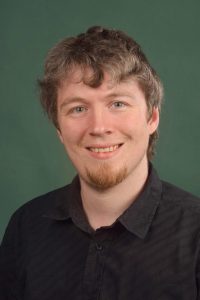 Benjamin Behrendt submitted his Phd thesis on “Visual Exploration and Comparison of Cardiac and Cerebral Blood Flow Data”. He contiuned our collaboration with the Heart center Leipzig and initiated a cooperation with Ingrid Hotz’ group in Norrköping.
Benjamin Behrendt submitted his Phd thesis on “Visual Exploration and Comparison of Cardiac and Cerebral Blood Flow Data”. He contiuned our collaboration with the Heart center Leipzig and initiated a cooperation with Ingrid Hotz’ group in Norrköping.
Sylvia Saalfeld successfully defended her Habilitation (post-doctoral lecture qualification) with a talk on Computer support for intracranial aneurysms – summarizing her extensive research on many aspects of that topic. Heinz Handels joined us via a video conference as external reviewer. With enough space between us, approximately 30 participants were possible.
Nico Merten successfully defended his defense „Maps, Risk and Visualization Supported Reports for Multimodal Medical Image Data“. Prof. Th. Deserno and Prof. Heinrich Müller served as external reviewers and joined the defense via a video conference.
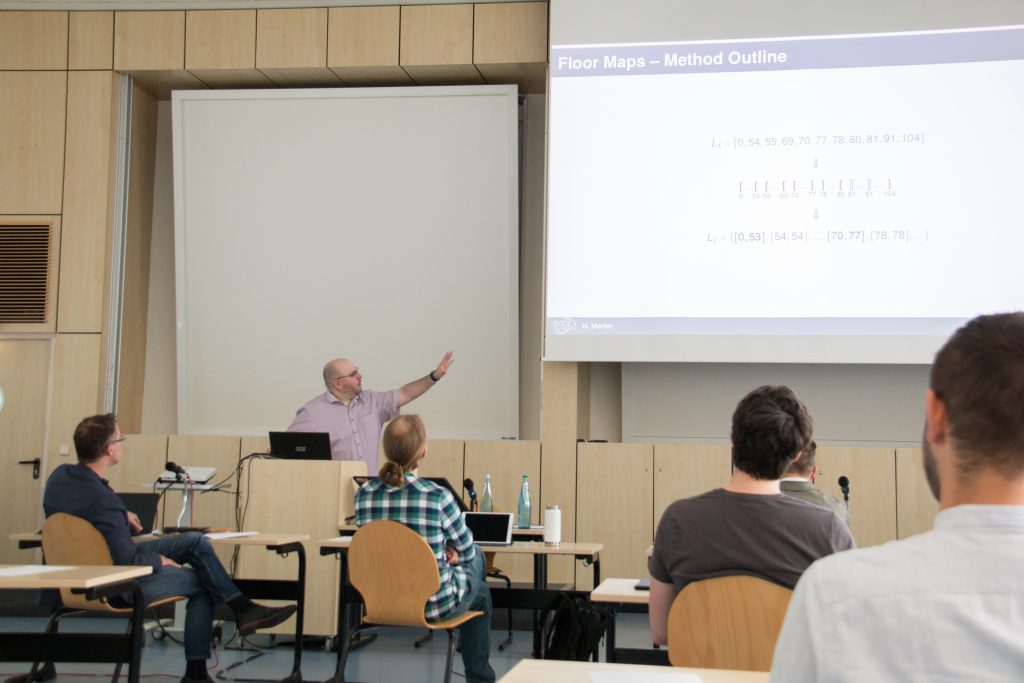
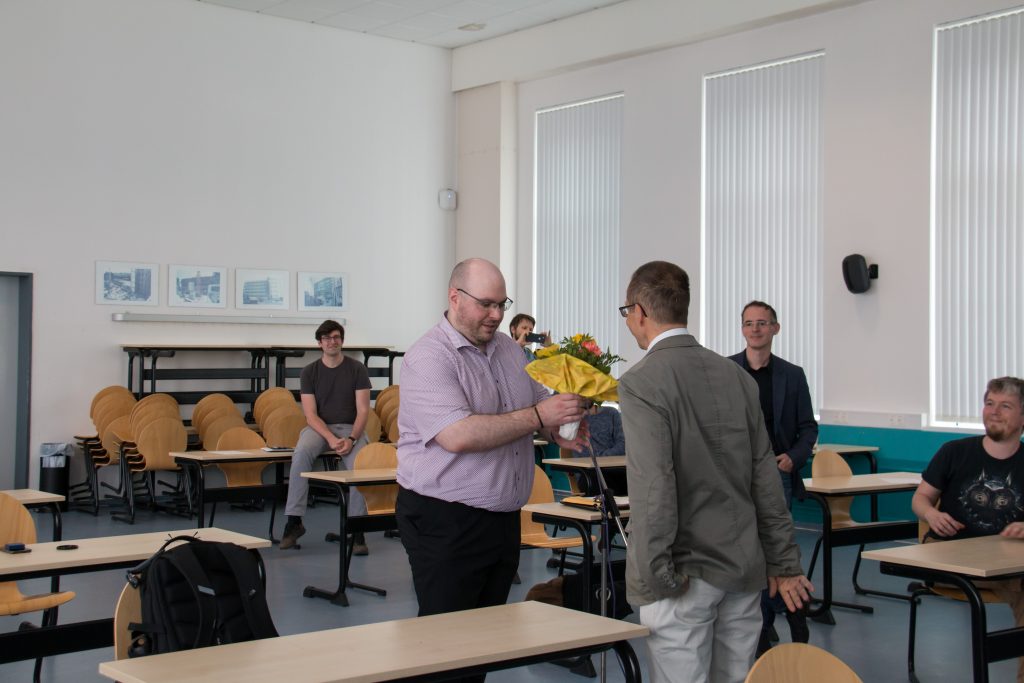
Moniqe Meuschke, research assistant at the Otto-von-Guericke University Magdeburg, received the Bildverarbeitung-für-die-Medizin (BVM) Award for her dissertation. The BVM Award is presented by the BVM Award Committee for innovative work in the field of medical image processing. In her dissertation she created a visual analysis of blood flow data in cerebral aneurysms. This is a disease of the cerebral artery. The vessel wall is bulging, posing a risk that the vessel will rupture. “Causes for the development and progression, as well as the effects of various treatment options, are poorly understood for these diseases. A computer-assisted analysis of medical data could provide fundamental support for the work of doctors and the decisions to be made,” explains the young scientist.
In her doctoral thesis, Dr. Meuschke visualised the relationships between the vascular mechanics and the internal blood flow that exerts forces on the walls. The goal was to find possible causes for the rupture of the aneurysm and to plan the best possible treatment.
In 2009, Moniqe Meuschke began her studies of Computational Visualistics with the application subject medicine at the University of Magdeburg. After her master’s degree, she did her doctorate in the Visualization Group under Prof. Bernhard Preim. Already during her studies she was interested in medical visualizations that help doctors to recognize diseases as early as possible and thus find the best treatment for patients.
Claudia Böttcher, conservator, explored our VR prototype to assemble some 400 pieces of the Epitaph destroyed in World War 2. The pieces can be sorted according to various criteria, they can be grabbed, freely rotated and associated with other pieces. It is a primarily an interactive system but envision some support to check whether two selected pieces may belong together. After the virtual reconstruction, the real composition is planned.
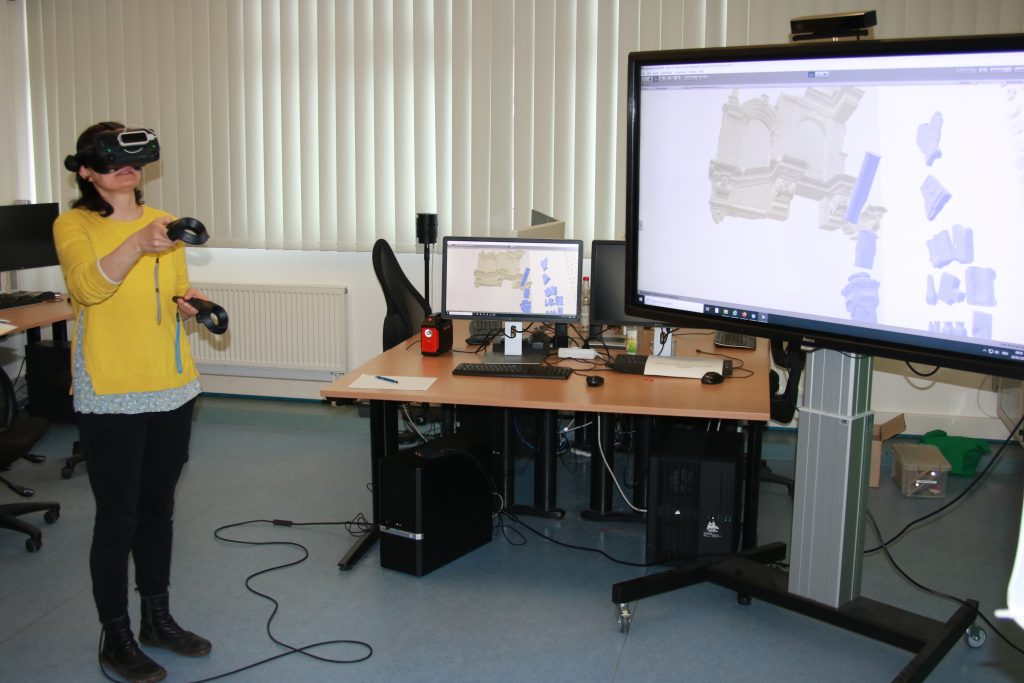
Ron Kikinis, Fraunhofer MEVIS/SPL Boston visited us and gave feedback to our VR applications. Jeffrey Heer, University of Washington presented at the Visual Computing colloquium and looked in our bloodflow-related research. Jeffs’ talks was probably the talk with the largest audience in the Visual Computing colloquium series.
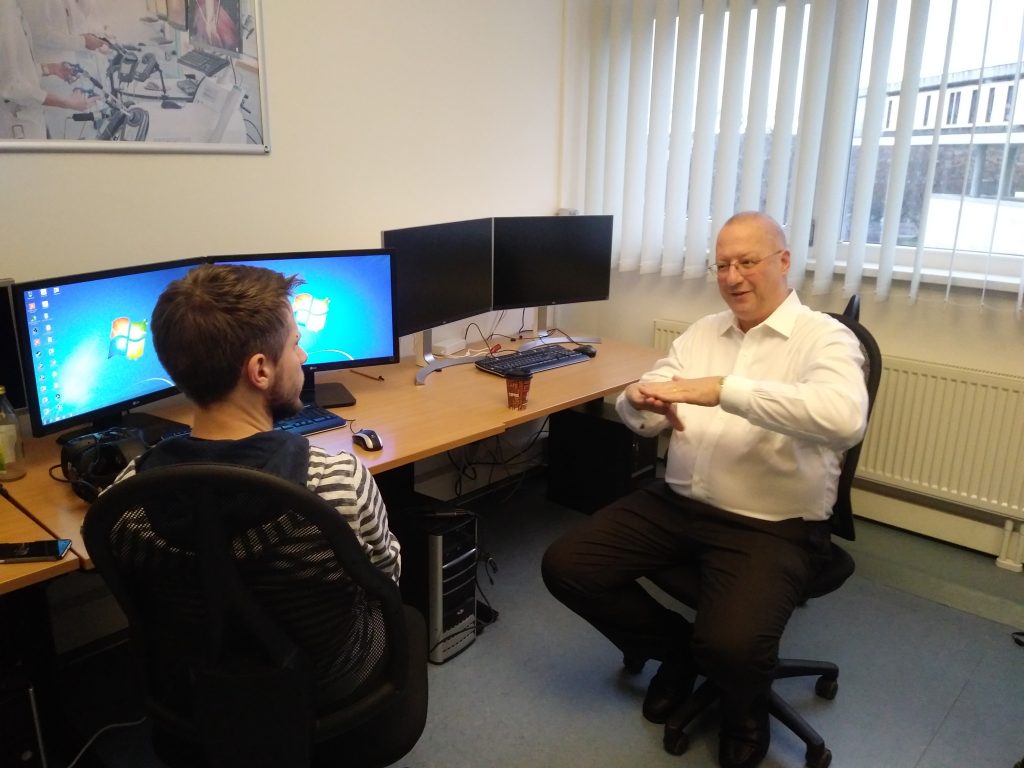
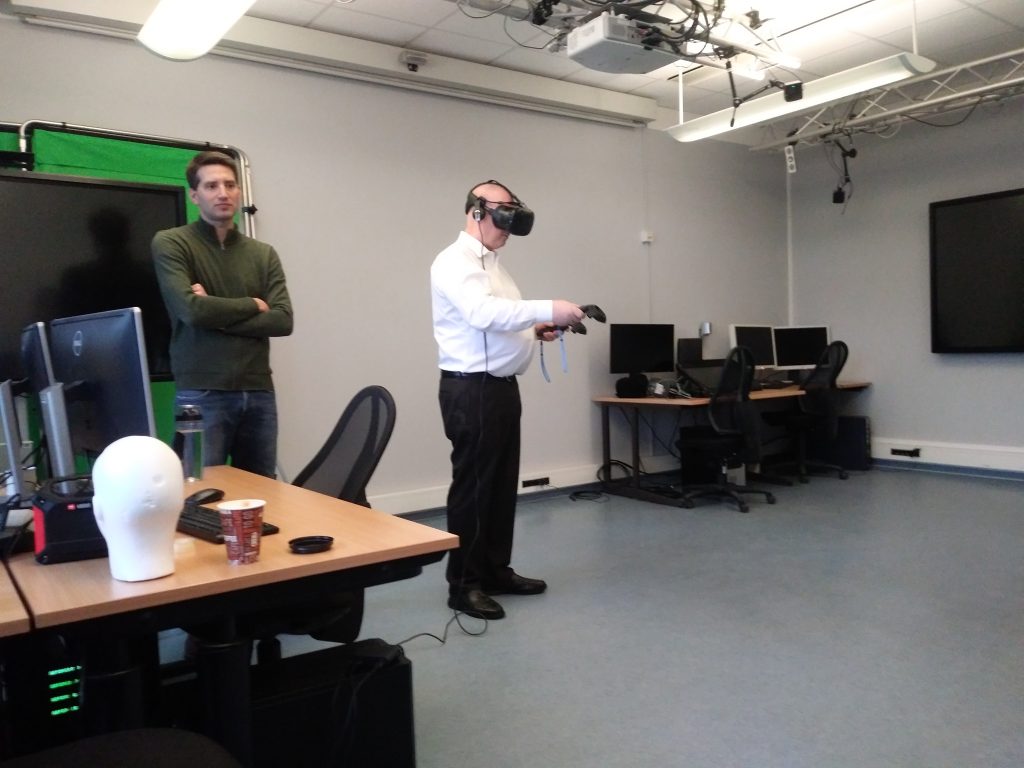
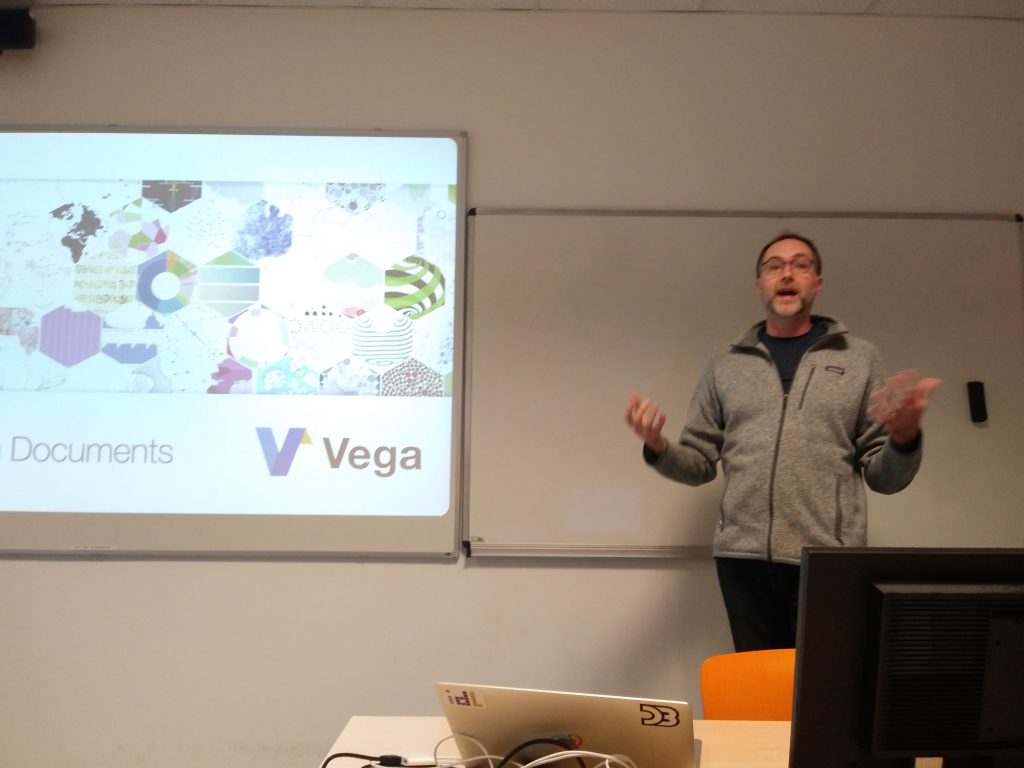
During the event “One hour of science” at the Magdeburg cathedral, Patrick Saalfeld presented the progress of the VR restoration tool, which is used to restore a grave monument, together with the friends’association of the cathedral, the rector and mechanical engineers from the Otto von Guericke University. A live VR demonstration showed how the restorers could use the program.
In 2020, an appeal for donations is to be launched. It is planned that every donor will be able to buy a symbolic piece of the epitaph.
News article: Volksstimme